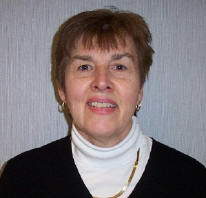Sharon Lance
Adams County Master Gardner
 An inexpensive and personally satisfying way to provide an abundance of plants in your home and yard this coming year is growing plants from seeds. This can include old or new varieties of annuals, perennials, biannuals, houseplants, vegetables,
herbs and grasses. You may have saved seeds from your garden last fall and, if they were stored properly, can be sown this spring. Your local nurseries will have seeds packets available to purchase or you can also contact seed companies that advertise in magazines, garden
books and on the Internet. One advantage of ordering seed catalogs is that it gives you the opportunity to view a broader selection of seeds and new varieties of plants. Most seed catalogs are free.
An inexpensive and personally satisfying way to provide an abundance of plants in your home and yard this coming year is growing plants from seeds. This can include old or new varieties of annuals, perennials, biannuals, houseplants, vegetables,
herbs and grasses. You may have saved seeds from your garden last fall and, if they were stored properly, can be sown this spring. Your local nurseries will have seeds packets available to purchase or you can also contact seed companies that advertise in magazines, garden
books and on the Internet. One advantage of ordering seed catalogs is that it gives you the opportunity to view a broader selection of seeds and new varieties of plants. Most seed catalogs are free.
A seed packet is a great source of information for the gardener. The seed company wants to provide you with as much information as possible for you to be successful when you use their product. Keep in mind not all seeds are the same. What I mean is
that seeds have different germination periods and different planting requirements. This and other useful information can be found on the back of the seed packet.
Sowing seeds doesn't have to be complicated or expensive. You will need pots; any ordinary flower-type pot will do, and soil. If the pot has been used before it should be cleaned with 1 part laundry bleach to 9 parts water for approximately 10
minutes. Plastic pots are a better choice than clay pots for starting seeds. Clay pots are porous and draw moisture from the soil and eventually from the seeds. (If seeds dry out, even once, they will not germinate.) If you elect to use clay pots, one suggestion is to soak
them in water for several hours before using them to start your seeds. Next, you will need sterile potting soil or a soilless mix. You can easily mix your own soil mix for sowing seeds by using equal parts of peat moss, pasteurized garden soil and course sand. This medium
provides nutrients to the seedlings and holds water well without becoming soggy. Garden soil should not be used because it is too compact and is not sterile.
Next, fill your clean pot with soil. Lightly compress the soil until the soil level is approximately ½" below the rim of the pot. Sprinkle seeds sparingly over the soil surface or a depth recommended on the seed packet. Cover seeds lightly to a depth
about twice the seed's diameter with additional soil, a fine grade of vermiculite, or finely ground milled sphagnum moss. (Sphagnum moss resists cold water so before applying it to the surface of the container moisten lightly with hot tap water.)
All seeds germinate best if planted with warm water. So once the seeds are sown set the pots in a container of warm water and leave it there until the surface of the container is moist. This method of watering providing moisture for your soil and
eliminates the over top-watering method of watering your soil. Also, it will not disturb the newly planted seeds.
After you have determined that the top of the soil is moist, remove the container from its water source and let it drain off for an hour or more. Place each pot into a plastic bag and seal. The plastic bag will keep the moisture circulating while the
seeds sprout. Most plants germinate best in 65-75F degree temperatures. This should be the temperature of the growing medium, not the air temperature, because the seeds are in contact with the medium.
Next, set the covered pots in an area that is 70-80F degrees. The room should have bright light, but not the direct rays of the sun, which could act like a solar heating system by raising the temperature inside the bag so high that the seeds would
die. When the seeds sprout, the plastic bags or covering should be removed and the seedlings should be kept in an area with same lighting and temperature recommendation as on your seed packet. You will need to be vigilant in keeping the soil moist, not wet. One option is to
use a fine mist spray. Also, watering your seedlings in the morning allows the surface of the soil to dry before nightfall, which helps to prevent damping-off disease. Keep in mind the crop's performance is based on ideal growing conditions and that includes keeping the
seeds warm and moist.
Remember to follow the four basic requirements to grow plants from seed by providing water, air, light and heat. These requirements are met when you purchase good quality seeds; use a clean container filled with well aerated, loose, moistened soil;
seal your container in plastic; and place them in a brightly lit location, away from direct sunlight, where the temperature will be in the 70-80 F degree range.
Read other articles on plants and gardens
Read other articles by
Sharon Lance